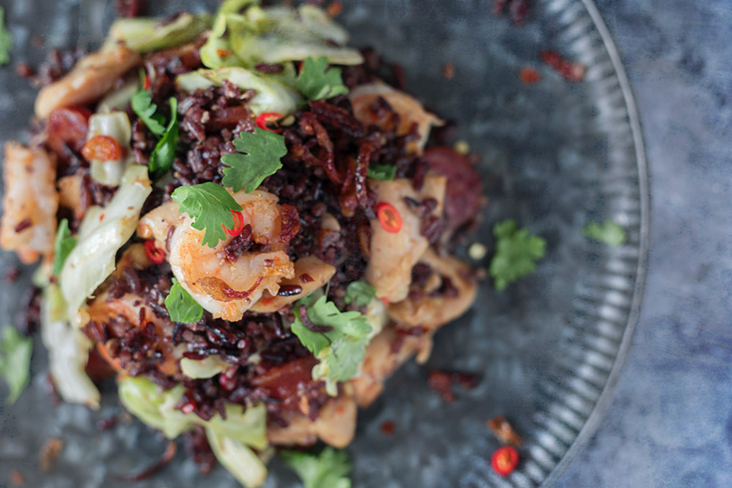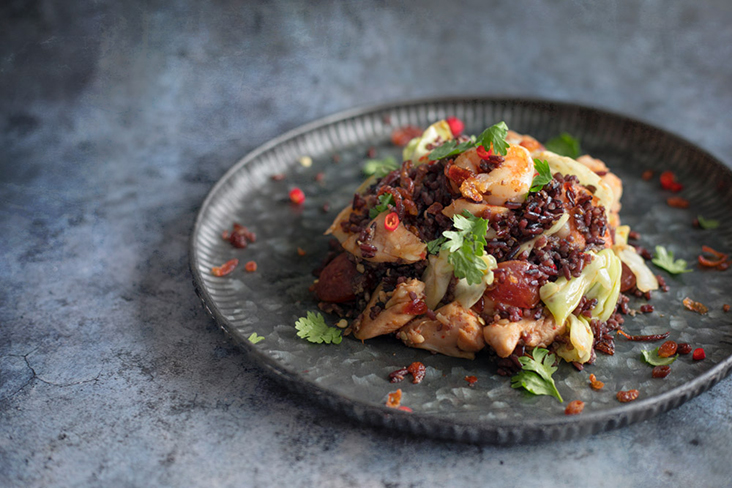KUALA LUMPUR, Oct 2 — We might fantasise about having a tidy and uncluttered home, free from detritus. The way Marie Kondo might envision it as she exhorts her followers to keep only things that spark joy and to say goodbye (politely, thanking the inanimate objects even as you alarm your family or housemates in doing so) to the rest.
I don’t know about you, but that never quite happens to me.
There is no specific room that is the worst offender (except perhaps what I kindly term our “store room” where I proudly display everything I haven’t an idea what to do with) but certainly none is spared.
Every room could do with less... stuff.
Take the kitchen, for instance. Even when we are militant about using up the perishables such as fresh produce, there are always some odds and ends waiting to be transformed into future meals.
Future meals that might never come to be, if we don’t get cracking on using these off-cuts and extra bits: from the heel of a hard cheese to your collection of broccoli stems waiting to be made into vegetable stock.

Yet inevitably we end up using whatever is easiest, whatever grabs our attention with their full portions and generous volume. They cry out, convincingly: “Use us first, we’re the easiest!”
Who could argue with that? Who has time to go out to the supermarket to get more ingredients when you try to use up that half an onion but the recipe calls for two?
This is where our lack of organisation comes in, rescuing us from our conundrum. Someone who is better prepared might eschew these odds and ends to follow their intended recipe down to the last gram and millilitre.
We — and I only include those readers who plan ahead as frequently as I do (i.e. never) — don’t have this problem. We haven’t a clue what to cook.
You see, sometimes you enter the kitchen with a plan. You have a clear idea of what you intend to cook, the exact list of ingredients floating in your head.
More often than not, we scour our pantry with trepidation, hoping we have enough ingredients to muster up something halfway edible. Or else it’s digging into our hoard of instant noodle packets... yet again.
Do not fret.
Not having “enough” ingredients (whatever that might entail, depending on the hypothetical recipe we are not using) can be a blessing. Just gather up the odds and ends we have been meaning to devour or discard and put it all together.

One easy way out of this dilemma is the eternal quick fix of fried rice. Except I didn’t have any rice.
Not the standard white rice, at any rate. What I did have, squirrelled away in the back of my freezer was a container of frozen riceberry, those chewy Thai rice grains that are a colour between purple and black.
Leftovers from some Thai meal. From that same meal, some cooked prawns I had frozen. In the fridge, a tied up packet of Chinese waxed sausages; I had a dozen of the preserved delicacies when I started but now only a couple were left.
What else?
A small container of stir-fried cabbage. A stalk of cilantro, warning that it will soon be past its best. A handful of cili padi from my last takeaway, an accompaniment I forgot to add to my plate and now an enticing possibility.
Suddenly fried rice sounds like a great option again, albeit not the standard version I’m used to. Instead what I ended up with is a riceberry, prawn and Chinese sausage fried rice... which, quite honestly, is too much of a mouthful, really.

Given that it’s constructed from the odds and ends that I have found in my pantry, after raiding my fridge and freezer, perhaps calling it a “Pantry Fried Rice Surprise” might be more accurate.
The rice grains might be chewy rather than fluffy. The Chinese sausages might be heavier than my go-to luncheon meat but a change can be exciting. It’s still fried rice and the surprise is how good it tastes.
This might become my new standard fried rice, really. Maybe yours too.
PANTRY FRIED RICE SURPRISE
There is no telling what you might find in your pantry: white rice, be it jasmine or Japanese sushi rice; Thai riceberry, dark and nutty; brown rice, full of fibre; some mixed grains, such as rice with quinoa.
That’s why it’s a surprise, you see.
They all work for your fried rice, though. The only thing you have to pay attention to is that these grains have to be leftovers — overnight cooked rice is drier so that you won’t end up with wet mush in your wok.
It also helps to prepare your sambal paste ahead of time so you have fewer moving parts once you get going with your masterful wok. This takes care of the aromatics — from chillies and garlic to red onions or shallots — so you can focus on the unique odds and ends that you’re using for your fried rice.

Besides the rice, the other leftover ingredients ought to be chopped up in more or less bite-sized chunks, so they fry evenly in the wok at the quickest of speeds. Hence the magic of a wok stir fry and the much desired wok hei.
(What’s a good fried rice without that wok-slicked aroma, after all?)
To finish, we’ll garnish with the bits of cilantro leaves and cili padi we have hanging around. Waste not, want not. And in this case, it’s so delicious that you’ll want... a lot.
Remember: A little bit of pantry magic goes a long way.
Ingredients: Sambal paste
5 dried chillies
5 fresh cili padi
2 teaspoons salt
2 tablespoons dried shrimps, soaked in water for 30 minutes and drained
2-5 red onions (or shallots)
2-5 cloves of garlic
1 teaspoon turmeric powder
1 teaspoon white pepper powder
Ingredients: Fried rice
2 large eggs
2 cups of leftover cooked rice (riceberry, brown rice, etc.)
2 tablespoons coconut oil
2 Chinese waxed sausages, cut into discs
1-2 tablespoons sambal paste (see above)
¼ cabbage, sliced thinly
8-12 cooked prawns
Optional: Some leftover cooked chicken meat, coarsely chopped or shredded
Fish sauce to taste
To garnish: some cilantro and sliced cili padi
Method
To make the sambal paste, add the dried chilies, cili padi and salt to a mortar. Pound with a pestle until well combined.
Add the rehydrated dried shrimps, red onions, garlic, turmeric powder and white pepper powder. Keep pounding until you get a uniform paste. Set aside.
Beat the eggs until well combined then pour over the leftover rice. Allow to soak for a few minutes while you begin to cook the rest of the ingredients.
Add the oil to a large wok set over high heat. When hot, add the discs of Chinese sausages and sauté till the fat in the sausages has rendered. Remove the sausages and set aside.

There should be some oil left in the wok, especially with the rendered fat from the Chinese sausages; just a film would do. Add the sambal paste and stir-fry till fragrant.
Now add the egg-soaked rice. Never stop stirring to make sure you break up large clumps of rice and to prevent any from sticking to the bottom of the wok. Quick stirring will also help incorporate the aromatic paste with the rice and ensure an even scrambling of the eggs.
Once the egg has been scrambled, return the Chinese sausages to the wok. Add the cabbage, prawns and leftover chicken meat, if using, and stir-fry a bit more. Season with a bit of fish sauce to taste.
Dish the fried rice into individual plates. Garnish with cilantro and cili padi. Serve immediately.
For more Weekend Kitchen and other slice-of-life stories, visit lifeforbeginners.com.






















